The Digital Image Correlation, DIC, is a non-contact optical technique that allows the displacement and strain fields to be evaluated on a generic, three-dimensional surface.
The acquisitions are made by a Q-400 Digital Image Correlation, DIC, system by Dantec Dynamics.This apparatus is made of two 2-megapixel cameras for high-frequency image tracking, one light source, the supporting structure, the data acquisition unit, and the calibration tool. Image processing, on the other hand, is performed with the licensed Instra4D V2.1 software tool.
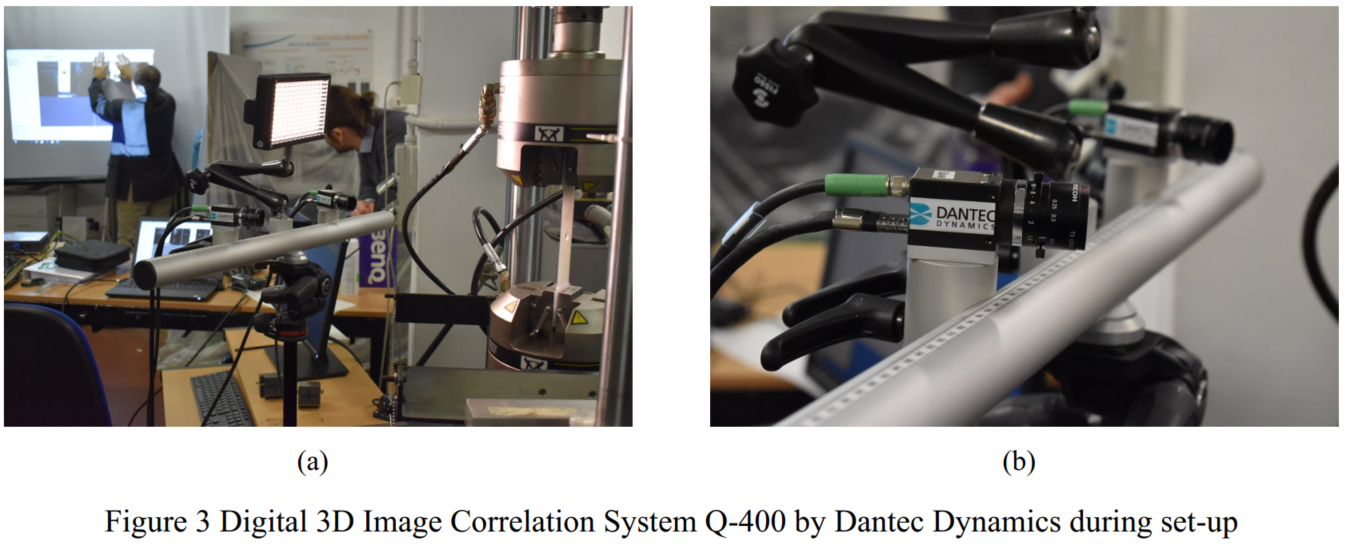
The small dimensions of the system and its high set-up flexibility allows the system to be used during Lab test but also for in-situ acquisitions of existing structures.
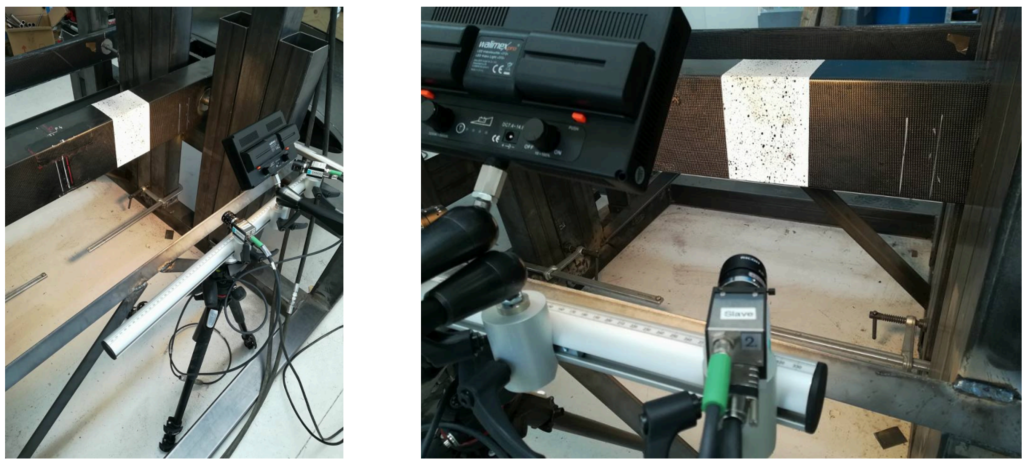
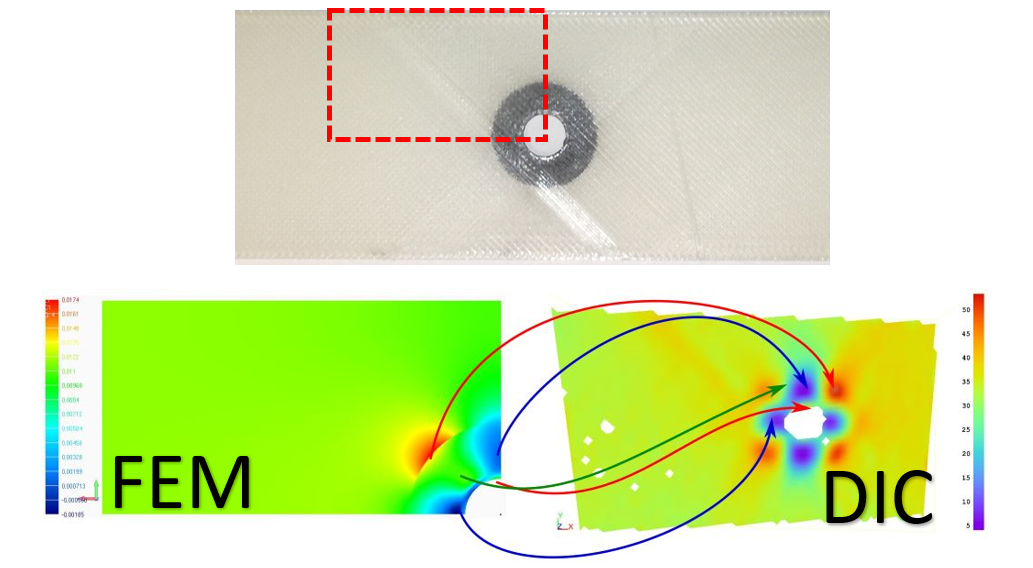
MUL2 Investigators
Erasmo Carrera, Matteo Filippi, Alfonso Pagani, Enrico Zappino
Related Projects
It is well recognized that the governing differential equations of 3D elasticity problems can be solved only for a narrow range of problems. Among the methods based on weak form solutions, the Finite Element Method (FEM) has been probably the most popular. Although FEM is versatile and applicable to arbitrary geometries, boundary conditions and material heterogeneity, it can sometimes be very expensive from a computational standpoint. There are other limitations to FEM as well. For example, the conventional FEM may not capture stress singularities or all necessary high-frequency wave modes of interest, which can play an important role in the correct characterization of the entire vibration pattern of a structure.
In this domain, MUL2 has been working in the development of methods based on closed-form solutions as well as numerical methods using frequency-dependent shape functions, i.e., dynamic shape functions.
Illustrative tools for the (numerically exact) static and dynamic resolution of beams and plates are available in the software section of this website.
MUL2 Investigators
Erasmo Carrera, Maria Cinefra, Alfonso Pagani
Related Projects
The use of 3D printing techniques is one of the most promising advances in the manufacturing field. Thanks to the 3D printer Mark Two, by Markforged, Mul2 Group has the capabilities to create components reinforced by carbon fiber, kevlar and glass fiber.
The enhanced fiber placement capabilities ensure a step forward in the development of Variable Angle Tow composites and can lead to highly optimized components.
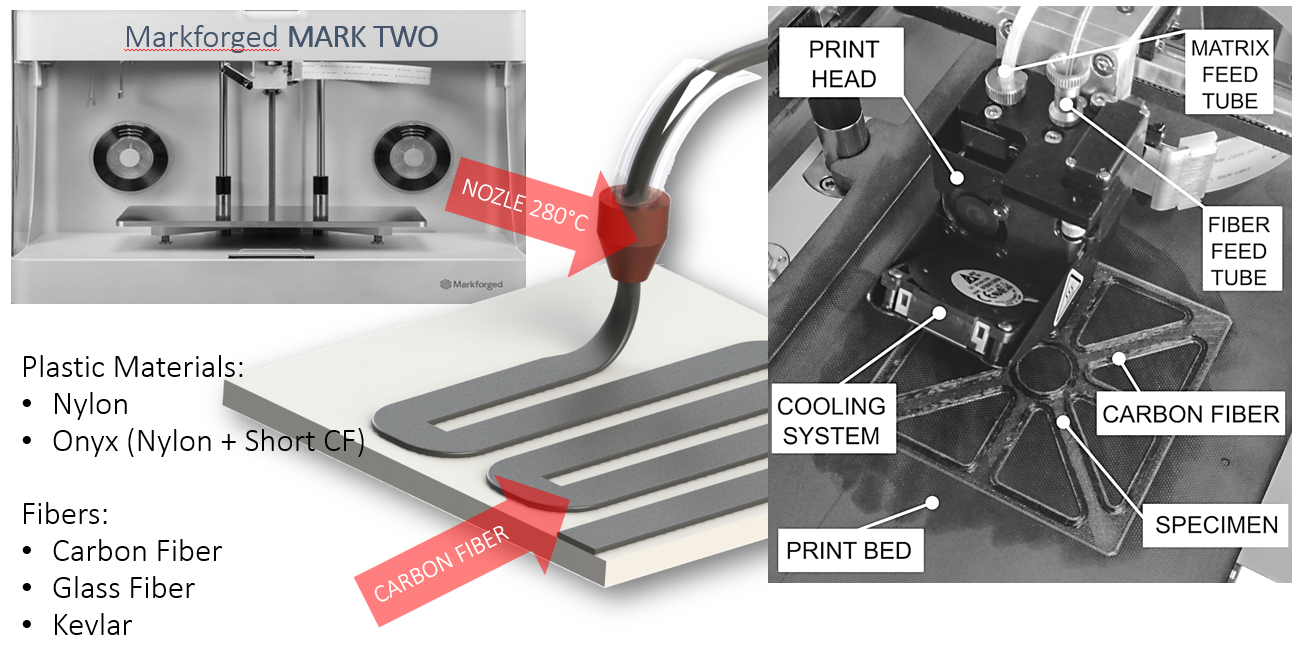
MUL2 Investigators
Erasmo Carrera, Matteo Filippi, Alfonso Pagani, Marco Petrolo, Enrico Zappino, Alberto Racionero
Related Projects
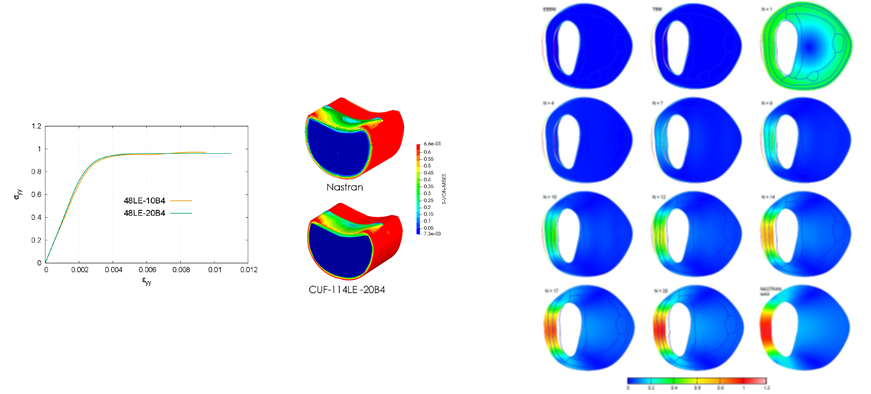
Biomechanics plays a fundamental role in modern science and research. The application of engineering tools in support of traditional medicine has been a success over the last decades. As an example, the advent of noninvasive, high- resolution imaging like ultrasounds or magnetic resonance, together with the growth and the improvement of numerical modeling, filled the gaps of in vivo test difficulties.
The human body is a complex conglomerate made of different sub-systems, each of which with its own peculiarities and challenges from the modeling standpoint. MUL2 has developed multi-fidelity and multi-field models of a human atherosclerotic artery, dental prostheses and fibrous connective tissue (tendon).
MUL2 Investigators
Erasmo Carrera, Alfonso Pagani, Riccardo Augello
Related Projects
Structure Mechanics and FEM
One- and two-dimensional structural theories are mathematical tools to reduce three-dimensional structural problems to computationally more efficient models. One of the approaches adopted to build 1D and 2D models relies on the use of expansions of the unknown variables over the cross-section and thickness of the structure, respectively. In a finite element scenario, such an expansion defines the nodal degrees of freedom of the model. The Carrera Unified Formulation (CUF) is a methodology acting at the structural theory and governing equation level and generating any structural model with a compact formalism. For instance, in the case of the 3D governing equations of elasticity, only two CUF expressions are necessary to obtain the entire set of equations and related finite element matrices. Furthermore, CUF can handle all the main modeling approaches to model structures, e.g., the equivalent single layer and layer-wise approach for composites, and it has introduced original alternatives such as the node-dependent-kinematics (NDK) method. CUF can serve as a tool to evaluate the performance of structural theories via the generation of best theory diagrams; moreover, the proper coupling of CUF and machine learning tools can serve as an aid to develop efficient finite element models.
MUL2 is entirely based on CUF at the structural theory level. Over the years, several modeling capabilities have been implemented for beam, plate, and finite shell elements. Concerning composites and multifield problems, the most relevant ones are the layer-wise approach and the Reissner Mixed Variational Theorem (RMVT). The component-wise approach is available to model any structural parts at all scales and handle the entire test pyramid of metallic and composite structures. One of the unique capabilities of MUL2 is the NDK allowing the choice of the structural theory at the nodal level, i.e., the simultaneous use of different structural theories in the same FE model. Such capabilities can enhance the results from commercial codes via plug-ins available in the software are of this website.
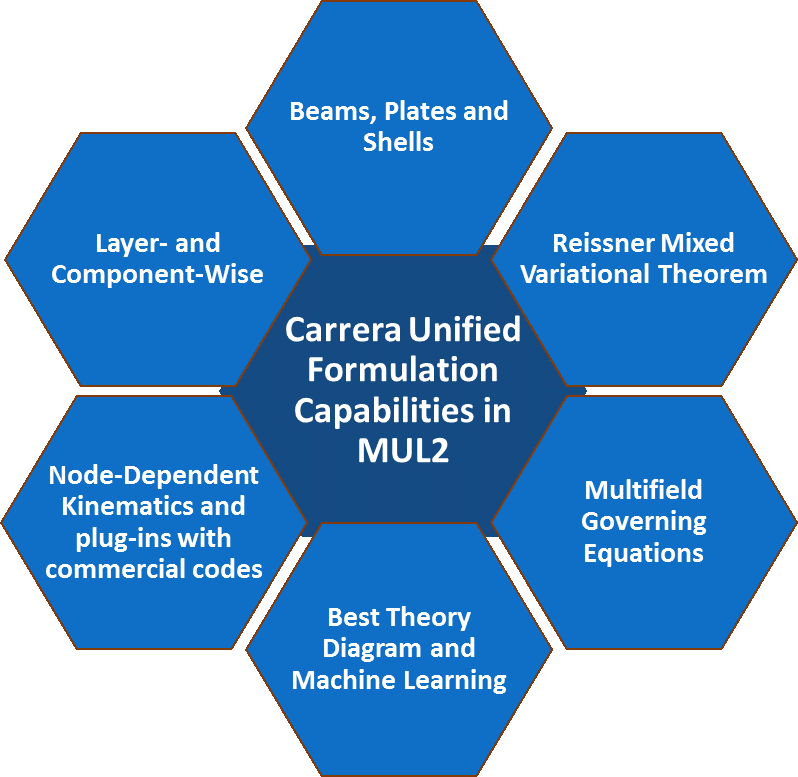
MUL2 Investigators
Erasmo Carrera, Maria Cinefra, Matteo Filippi, Guohong Li, Alfonso Pagani, Marco Petrolo, Enrico Zappino, Manish Hassan Nagaraj, Riccardo Augello, Nasim Fallahi, Rodolfo Azzara, Maria Pia Lionetti, Michele Delicata, Daniel Giusa
Related Projects
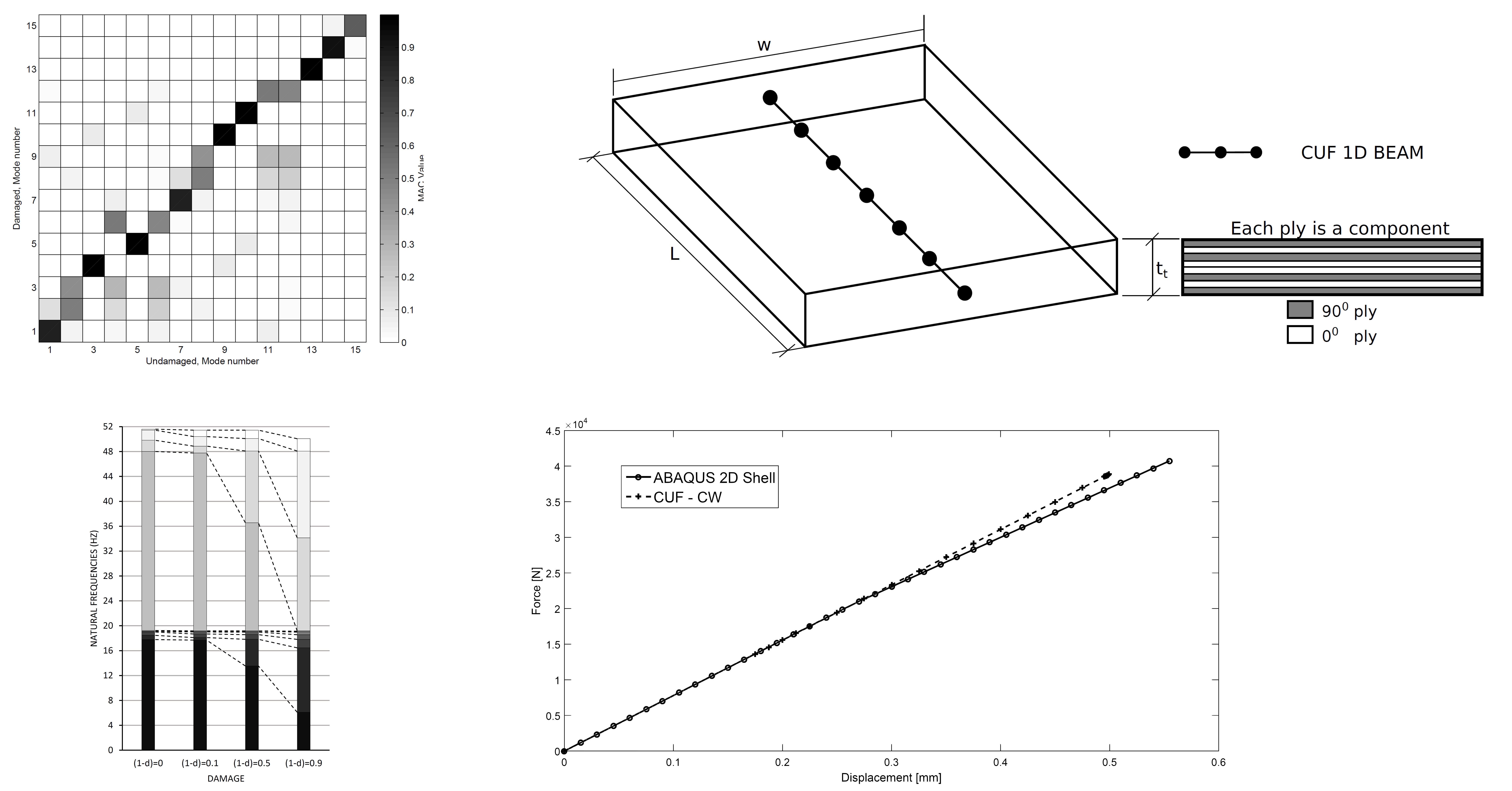
The CUF models can provide accurate 3D displacement, strain and stress fields with low computational cost. Such features are of particular interest for the damage and failure analysis of metallic and composite structures. In fact, the accurate prediction of the damage state and failure occurrence requires accurate 3D stress fields and local effects. Furthermore, given that nonlinearities have to be taken into account, numerically efficient models are desired to lower the computational costs. Currently, the MUL2 group is dealing with
- Tha analysis of the effects of damage on the structural behavior of structures for non-destructive monitoring purposes.
- The development of material and geometric nonlinear models.
- The extension to progressive failure analysis of composite structures.
MUL2 Investigators
Erasmo Carrera, Maria Cinefra, Alfonso Pagani, Marco Petrolo, Riccardo Augello, Michele Delicata
Reference Papers
Maiarù M., Petrolo M., Carrera E., "Evaluation of energy and failure parameters in composite structures via a Component-Wise approach" Composites Part B (2017), 108, pp. 53-64
Carrera E., Pagani A., Petrolo M.. "Free Vibrations of Damaged Aircraft Structures by Component-Wise Analysis", AIAA Journal, (2016), 50(10), pp. 3091-3106
Petrolo M., Carrera E., Alawami A.S.A.S.. "Free vibration analysis of damaged beams via refined models", Advances in Aircraft and Spacecraft Science (2016), 3(1), pp. 95-112